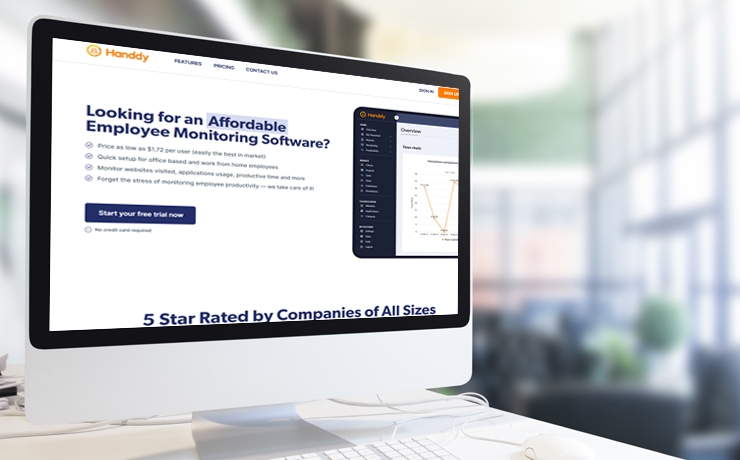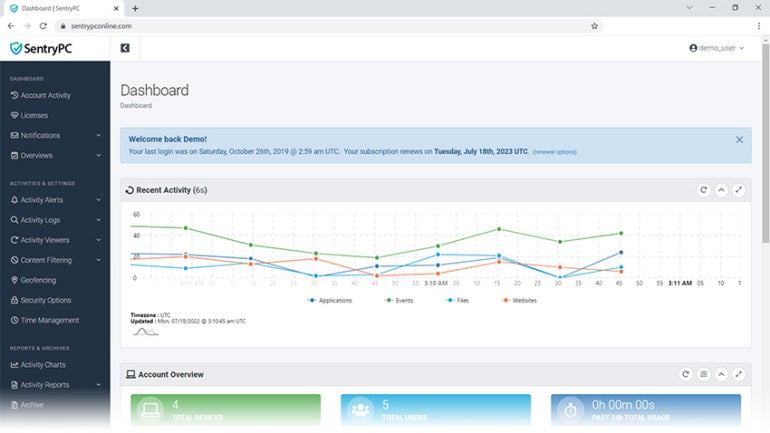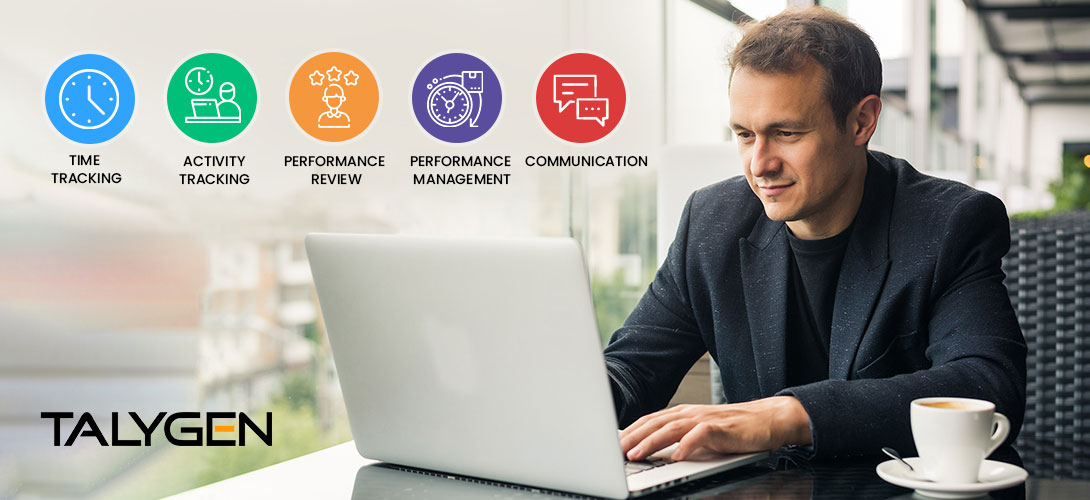Free Suggestions For Selecting Time Tracking Monitoring Service Company
What Is The Best Employee Monitoring Software? And What Should I Know Before Choosing It?The software for monitoring employees is a kind of software used by businesses to monitor and track employees’ activities. It permits employers to collect data on various aspects of the behavior of employees, such as internet usage, application usage, keystrokes and even screen shots. The principal goal of the software to monitor employees' activities is to enhance productivity, make sure that employees are in the compliance of company policies, safeguard sensitive data, and resolve security issues. When selecting an employee-monitoring software, there are many things to think about. Here are some important points to remember: Features: Determine the exact features you need based on the requirements of your company. Features that are common include: activity monitoring (including blocking websites) Keystroke recording (including application usage tracking) as well as email monitoring and reporting. Prioritize only the features which are relevant to your monitoring needs.
Privacy and Compliance. Ensure that your software complies with all applicable moral and legal guidelines. Familiarize yourself with applicable laws and regulations that apply to your area, for example privacy and data protection laws. Find software that offers clear and customizable settings that protect the privacy of employees.
User-Friendliness: Consider the program's accessibility and user-friendliness. Simple interfaces that are easy to use and simple set-up processes will reduce time and make it easier to implement. Customizable dashboards and intuitive tools for reporting will assist you easily navigate the data.
Integrity and compatibility - Check whether the software integrates seamlessly with your current infrastructure and other systems you are using. This includes operating systems as well as email clients. Compatibility is key to ensuring uninterrupted monitoring, and without disrupting your everyday activities.
Data Security: Examine the security measures of the software to ensure security of the data collected. Data encryption, storage in a secure environment access control, as well as compliance with security standards are essential. Check that the software company has robust security practices and an established track record of data protection.
Scalability- Take into consideration the scalability of the software in order to accommodate your organization's growth. Choose software that will easily increase its capacity to meet the needs of your organization in the event of expanding your workforce or opening new locations.
Reporting and Analytics: Check out the software’s reports and analytics features. It is important to look for features that give you complete information about the productivity of employees, their timing allocation, and trends. Customized reports and analytics can help you to make informed decisions, and identify areas for improvement.
Customer Support - Examine the quality and accessibility of customer service provided by software providers. Find out how responsive, available as well as the quality of technical support they provide. A good customer support team will be able to provide immediate assistance to any problems that arise.
Cost- Take a look at the pricing structure of the software. Are you paying a one-time payment, a subscription or dependent on usage? Be aware of the cost and if there are extra charges for upgrades, support, or additional features. Plan your purchase according to the features and value provided.
Transparency and Communication With Employees Communication with employees should be clear and openness when communicating with employees pertaining to monitoring software. Explain the scope and purpose of monitoring in a transparent manner. Answer any questions they may have and make sure they understand how privacy will be protected.
When you look at these aspects you can make an educated decision that is in line with your company's particular needs and protects employees' privacy while meeting all lawful obligations. Take a look at the top rated employee monitoring services for website recommendations.

What Are The Features Of The Employee Monitoring Software? And What Are The Differences Between Them?
Software for employee monitoring offers a range of tools to monitor and analyse employee actions. Different software solutions may offer various features, but these are the most popular. It provides a comprehensive overview of how employees spend their time working.
Keystroke log- Keystroke recording records every keystroke made by employees. It helps find productivity bottlenecks, and also identify unauthorized actions and collect evidence to aid investigations.
Screenshots or Screen Recording Screen Recording - Certain software can take regular screenshots from employee computers screens, while other software records their screens live. This feature can help assess productivity, monitor that compliance is maintained, and help to resolve issues.
Internet Usage Tracking This feature records employees' online activities, including visited websites, search queries, downloads, etc. It will help to identify inappropriate browsing or security risks.
Application Usage Tracking - This feature tracks the software used by employees during work time. It provides insight into which applications are used by employees the most often and helps identify any unapproved or excessive usage.
Email Monitoring - Email monitoring allows employers to monitor employees' emails, which include messages that were received and sent attachments, emails, and other email content. It's a great way to enforce company policies as well as protect information and investigate suspicious activities.
Tracking of Documents and Files - This function tracks changes to files and their access. It can help protect sensitive information, monitor document collaborative work, and ensure compliance to data security policies.
Remote Monitoring: Employers have the ability to monitor employees remotely, or even if they are in various places. Employers are able to monitor their activity and ensure the efficiency of employees regardless of where they are.
Productivity Analysis Software to monitor employees usually includes productivity analysis tools that offer insight into the productivity of employees working patterns, work patterns, as well as time allocation. These analyses can help to identify areas of efficiency and improve workflow.
Analytics and Reporting- Robust tools for reporting and analytics create detailed reports using the information that has been collected. These reports provide valuable insights into employee performance as well as resource allocation and time management.
Software that can provide features to ensure compliance and management of policies can ensure that a company's policies and regulations are met. Employers can define and enforce policies pertaining to acceptable computer usage as well as internet access and data security.
Alerts and Notifications: Alerts and notifications alert managers or employers when certain actions or events take place. For instance, they could warn about excessive internet use or attempts to access restricted websites, or suspicious behavior.
These features are available in different software solutions for employee monitoring. Take into consideration the features of software that are compatible with your objectives for monitoring and stick to ethical and legal guidelines within your region. Read the most popular employee monitoring company for blog examples.

What Software Does The Employee Tracker Adhere With Compliance And Privacy Law
It is crucial that the software used for monitoring employees is compliant and adheres to data privacy laws. While the specific legal requirements can differ from jurisdiction to jurisdiction, here are some common ways in which employee monitoring software is in compliance with compliance and privacy laws- Consent and Notice- Many states require that employees give informed consent and receive an advance notice of any monitoring activities. The tools used to monitor employees usually have tools that allow employers to communicate with their employees in a concise way. This is accomplished through the use of written notices sent to employees, getting their permission using consent forms or creating guidelines for monitoring in a manual.
Transparent Monitoring Policies - Transparent monitoring policies promote transparency by informing employees of the type of information being collected, why it's being monitored and the extent to which monitoring is being conducted. Employees are able to better be aware of their privacy rights and the limits of monitoring when policies are clear and comprehensive.
Data Minimization Principles - Employee monitoring software often employs data minimization principles to comply with privacy laws. This means that only necessary data is stored and collected. Data that is not needed or excessive shouldn't be gathered. By limiting data collection to that which is essential for monitoring This software decreases privacy risks and encourages compliance.
Anonymization or Aggregation - Some software for employee monitoring anonymizes and aggregates data to protect employees' privacy. The data collected is filtered to hide personal information that can be identified as being personally identifiable. The data of several employees are combined to provide an insight on the collective level without identifying individual.
Secure data storage and encryption The security of collected data is a priority for employee monitoring software. Secure data storage and encryption are used to protect the data against unauthorized access or disclosure by accident. Data security is essential when it is in transit and at rest.
Access Controls and Restricted Permissions- For compliance purposes, employee monitoring software usually gives granular access controls and permissions. Employers may limit access to the monitoring data only to the individuals who require it to have legitimate reasons like HR employees and designated administrators.
Employee Rights and Remedies: Respecting the rights of employees is vital to complying with privacy and compliance laws. Most employee monitoring programs contain tools that allow employees to access their own personal information as well as make corrections and file complaints. The software gives employees the ability to seek recourse in case of a privacy breach and exercise their rights.
Compliance to Data Protection Regulations- Employee monitoring software is designed to be in compliance with any applicable regulations regarding data protection, such as the General Data Protection Regulation (GDPR) in the European Union or the California Consumer Privacy Act (CCPA) in the United States. The term "compliance" refers to the implementation of data protection measures, respecting the rights of data subjects, and ensuring that data processing is legal.
It's important to note that while employee monitoring software can support compliance efforts, organizations must also consult legal professionals and be aware of pertinent laws and regulations that are in their area of responsibility. In order to comply to privacy and compliance regulations requires a comprehensive approach that goes beyond software. This includes clear policies, employee training and constant monitoring of compliance. Take a look at the recommended employee monitoring company for website recommendations.
